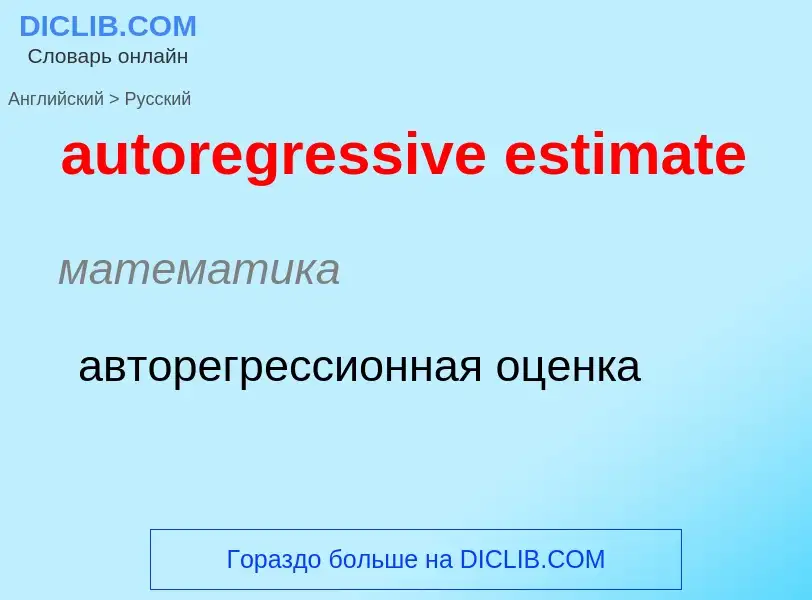Перевод и анализ слов искусственным интеллектом ChatGPT
На этой странице Вы можете получить подробный анализ слова или словосочетания, произведенный с помощью лучшей на сегодняшний день технологии искусственного интеллекта:
- как употребляется слово
- частота употребления
- используется оно чаще в устной или письменной речи
- варианты перевода слова
- примеры употребления (несколько фраз с переводом)
- этимология
autoregressive estimate - перевод на русский
математика
авторегрессионная оценка
математика
авторегрессионная модель
математика
авторегрессионное прогнозирование
математика
авторегрессионный процесс
математика
авторегрессия
математика
авторегрессионный
авторегрессивный
авторегрессионная модель (для анализа временного ряда)
['bɔ:dəv'estimit]
американизм
бюджетная комиссия
математика
априорная оценка
математика
статистическая оценка
статистика
Википедия
In the statistical analysis of time series, autoregressive–moving-average (ARMA) models provide a parsimonious description of a (weakly) stationary stochastic process in terms of two polynomials, one for the autoregression (AR) and the second for the moving average (MA). The general ARMA model was described in the 1951 thesis of Peter Whittle, Hypothesis testing in time series analysis, and it was popularized in the 1970 book by George E. P. Box and Gwilym Jenkins.
Given a time series of data , the ARMA model is a tool for understanding and, perhaps, predicting future values in this series. The AR part involves regressing the variable on its own lagged (i.e., past) values. The MA part involves modeling the error term as a linear combination of error terms occurring contemporaneously and at various times in the past. The model is usually referred to as the ARMA(p,q) model where p is the order of the AR part and q is the order of the MA part (as defined below).
ARMA models can be estimated by using the Box–Jenkins method.




